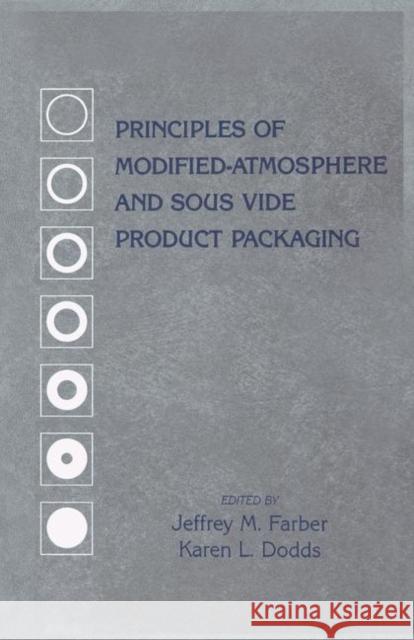


ISBN-13: 9781566762762 / Angielski / Twarda / 1995 / 464 str.
ISBN-13: 9781566762762 / Angielski / Twarda / 1995 / 464 str.
This publication deals with two technologies in Europe and North America used to extend the shelf life of foods, which generally avoid using preservatives.
Introduction Karen L. Dobbs, Health Canada
Modified Atmosphere Packaging - Sous Vide Technology Future
A Perspective on MAP Products in North America and Western Europe Aaron L. Brody, Rubbright, Brody, Inc.
A Brief Chronology of Altered Gaseous Environmental Food Packaging - North America - Europe - Conclusion - Appendix
Current Status of Sous Vide in Europe Toon Martens, ALMA Universitieits, Belgium
History - Present Market and Potential Growth - Technology - Safety Regulations - Research and Training - Conclusions
Microbiological Concerns Associated with MAP and Sous Vide Products John H. Hanlin, George M. Evancho and Peter J. Slade, Campbell Soup Co.
Introduction - Influence of Heat Processing on Survival of Pathogens - Influence of Gaseous Atmosphere on Survival and Growth of Pathogens in MAP and Sous Vide Products - Influence of Storage Temperature on Survival and Growth of Pathogens in MAP and Sous Vide Products - Control of Safety in MAP and Sous Vide Products
MAP and CAP of Fresh, Red Meats, Poultry and Offals C. O. Gill, Agriculture and Agri-Food Canada
Introduction - Deteriorative Processes in Fresh Meats - Packaging Materials and Equipment - Types of Preservative Packaging - The Use of Preservative Packaging with Commercial Products - Concluding Remarks
MAP of Cooked Meat and Poultry Products Joseph H. Hotchkiss and Scott W. Langston, Cornell University
Introduction - Current MAP Technology - Shelf Life Extension by MAP - Combination of MAP and Other Technologies - Safety of Poultry and Cooked MAP Meats - Summary
Fish and Shellfish Products in Sous Vide and Modified Atmosphere Packs D. M. Gibson and H. K. Davis, Ministry of Agriculture, Fisheries and Food, UK
Fish Composition - Normal Aerobic Spoilage Pattern - Sensory Perception of Spoilage and Definition of Shelf Life - Processing Parameters - Shelf Life Extension with Sous Vide Processing - Implications of MAP and Sous Vide Processing on Product Safety - Current Use of MAP and Sous Vide - Other Preservation Technologies
Principles and Practice of Modified Atmosphere Packaging of Horticultural Commodities Devon Zagory, Portharvest Technology Consultants
Changing Expectations and Changing Markets - Quality and the Maintenance of Quality - Respiration - Shelf Life Extension by MAP - Selecting the Proper Packaging Materials - Packaging Equipment - Commercial Use of MAP for Fresh Produce - Future Market Potential
Modified Atmosphere Packaging of Bakery and Pasta Products J. P. Smith and B. K. Simpson, McGill University
Introduction - Spoilage of Bakery and Pasta Products - Modified Atmosphere Packaging - Conclusion
Sous Vide: Past, Present and Future J. B. Bailey, Vie de France, USA
Sous Vide Defined - A Brief History of Sous Vide - Sous Vide in the 1990s
The Potential Use of Additional Hurdles to Increase the Microbiological Safety of MAP and Sous Vide Products I. R. Grant and M. F. Patterson, The Queen's University of Belfast
Introduction to Hurdle Concept - Irradiation - Biopreservation - Chemical Preservatives - Conclusions
Modified Atmosphere Packaging Present and Future Uses of Gas Abosrbents and Generators J. P. Smith, McGill University; Y. Abe and H. Hoshino, Mitsubishi Gas Chemical Co.
Introduction - O2 Absorbents - Ethylene Absorbents - Athanol Vapous - Conclusion
The Applications of HACCP for MAP and Sous Vide Products O. Peter Snyder, Jr., Hospitality Institute of Technology and Management
Introduction - The Food Process System - I. Application of HACCP to MAP-Sous Vide - II. The System: Hazards and Controls - III. Identify the Variables in a Food System - IV. Implementing HACCP - V. An Industry-Based HACCP Food Safety System - Plan, Develop, Implement and Verify a HACCP Plan - Organize for Zero Defects - Operate and Control for Zero Defects - Measure for Zero Defects - Summary
Potential Use of Time-Temperature Indicators as an Indicator of Temperature Abuse of MAP Products Bin Fu and Theodore P. Labuza, University of Minnesota
Temperature Abuse Generating Potential Hazard - How Do TTIs Work? - Modeling Temperature Sensitivity of Foods - Correlation of TTIs with Food - Use of TTIs - Further Considerations - Future Look Regulations and Guidelines Regarding the Manufacture and Sale of MAP and Sous Vide Products Jeffrey M. Farber, Health Canada
Rationale Behind the Regulatory Approach - Current Canadian Guidelines Regarding MAP and Sous Vide Products - Current U.S. Guidelines Regarding MAP and Sous Vide Products - Current European Guidelines Regarding MAP and Sous Vide Products - Future Prospects
Index
Farber\, Jeffrey M.; Dodds\, Karen
1997-2025 DolnySlask.com Agencja Internetowa







